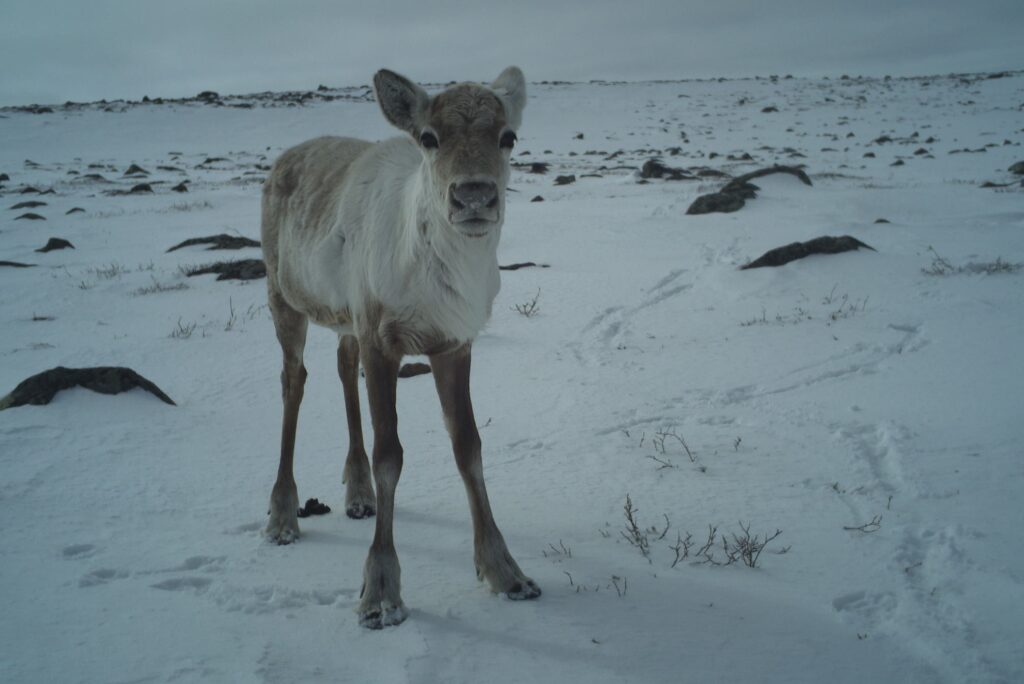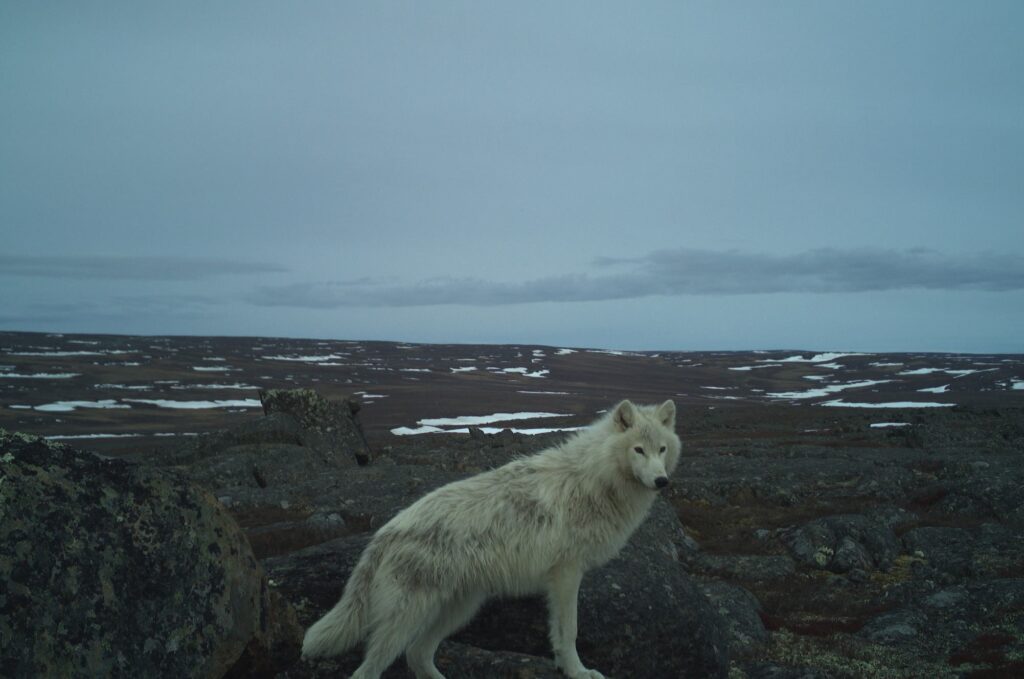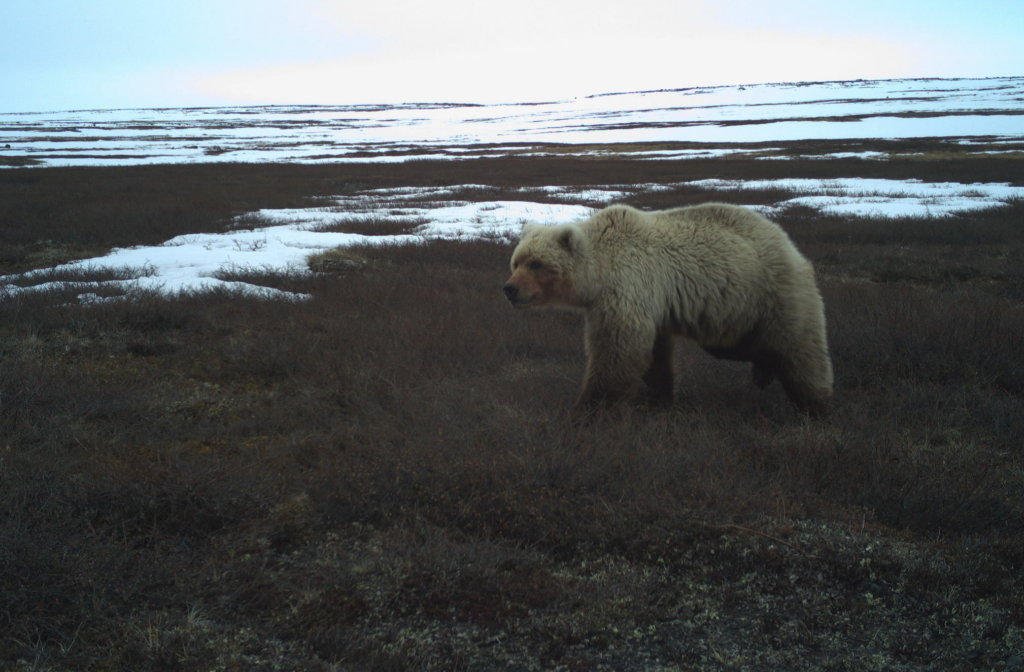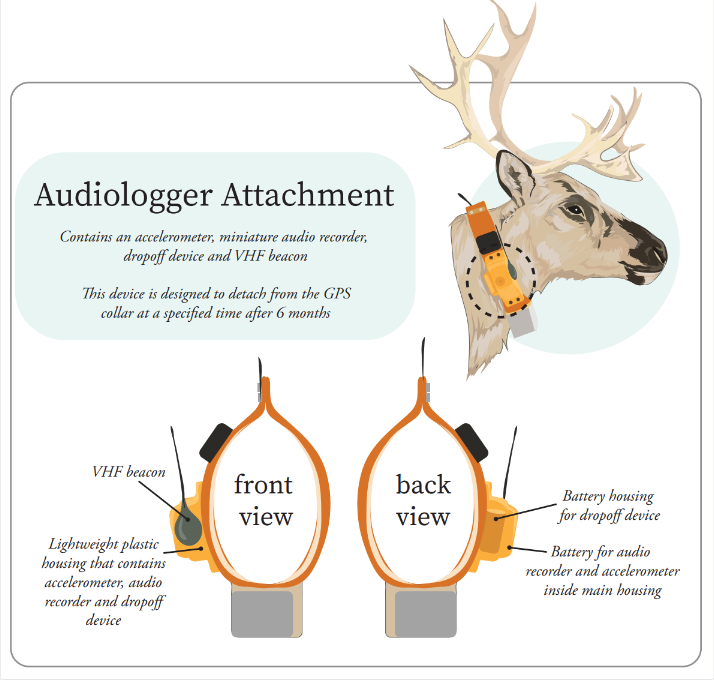Arctic caribou are on thin ice. AI and other tech can help change that

From now until midnight on Nov. 28, 2023, your Giving Tuesday gift will be matched* to make twice the impact for Arctic species conservation.
The endangered Dolphin and Union barren-ground caribou herd is on thin ice, literally. Their population has declined by 89 per cent from 1997 to 2020, and one of the biggest threats they face to recovery is changing sea ice conditions.
Known locally as the “island” caribou, the herd crosses the frozen ocean twice a year. Traversing at the Dolphin and Union Strait, and increasingly Coronation Gulf, the herd’s spring migration takes them from the mainland to Victoria Island where they birth and raise their young before returning south in the fall.
But with the Arctic warming at nearly four times the global average, sea ice is forming later in the fall and thawing earlier in the spring. The ice also isn’t as reliably thick or strong, resulting in some caribou falling through and drowning during their 40-to-50-kilometre crossing. And it’s not just wildlife affected by these increasingly treacherous sea-ice conditions — Inuit regularly cross the same now-treacherous ice on snowmobiles.
To keep people and wildlife safe, WWF is advocating for the protection of this migratory pathway from ice-breaking ships that can reduce sea ice connectivity.
We’re also partnering with the British Antarctic Survey to assess the potential of IceNet, an artificial intelligence (AI) system, to anticipate the timing, location and risk of sea-ice crossings along the Dolphin and Union herd’s dangerous migratory route.
IceNet is being trained using satellite observations of Arctic Sea ice and data from historic caribou migrations. Researchers hope they will eventually be able to use this technology to build an early warning tool for risky caribou crossings and to inform people of safe ice conditions.
Camera traps catch caribou predators
Caribou also face challenges ranging from industrial activity to predators, and with some herds at all-time lows, reducing calf mortality is more important to population recovery than ever.

The struggling Bathurst herd, named after their traditional calving ground at Bathurst Inlet, is among the most threatened. An estimated 6,240 individuals remain, down over 95 per cent from a high of roughly 470,000 in the mid-1980s.
WWF-Canada’s Arctic Species Conservation Fund supported a project using passive surveillance to understand the demographics of the herd and threats at their calving ground that could be contributing to their decline. Nearly 100 motion sensitive cameras and recording units were spaced in a grid pattern across 1,600 square kilometres of calving grounds.
Local community members were trained how to use the wildlife sensor technology, helping to set up, monitor and retrieve the mounted trails cameras.
Thousands of images of caribou, as well as predators such as wolves, wolverines and bears were captured. Many of the bears were photographed close-up, playing with the camera equipment!

Researchers then used machine learning technology such as grizzly bear facial recognition software to identify and count predators and to classify caribou by age and sex, helping researchers determine the number of cow/calf pairs. This information will be used to inform the best management practices to safeguard caribou on their calving grounds.
Animal-borne sensors measure disturbances
Insects and noise from industrial activity like nearby mining operations are more than mere annoyances brought on by climate change — they can be detrimental to caribou survival. To find out just how detrimental, WWF-Canada is supporting research using animal-borne sensors to learn how the threatened Bluenose east and Bathurst herds are responding to these disturbances.
How does it work? Caribou collars are equipped with miniature sound and movement receptors (accelerometers) to measure how industrial noise and insect activity impact the behaviour and health of the caribou. These findings will help provide real-time responses to environmental factors and information on caribou well-being and calf survival.
Long term, this research will help explain and predict population trends and guide land-use decisions. It also holds the potential to enhance monitoring and mitigate the impact of human activities, particularly disturbances from mining operations, on caribou and their habitat.
Developed by the University Montpellier’s Centre for Functional and Evolutionary Ecology
Make 2X the difference this Giving Tuesday
These are just a few examples of how WWF-Canada’s Arctic Species Conservation Fund is using technology to give barren-ground caribou and other Arctic wildlife the best possible chance at adapting to a rapidly warming Arctic.
Since the fund started in 2016, WWF-Canada has supported more than 80 projects across the Canadian Arctic that have made incredible breakthroughs for wildlife, amplified the voices of northern communities, and protected critical habitats.
There are many more scientific discoveries waiting to happen with your support. Please give before 11:59 p.m. Nov. 28 to have your Giving Tuesday gift is matched* for double the impact.


